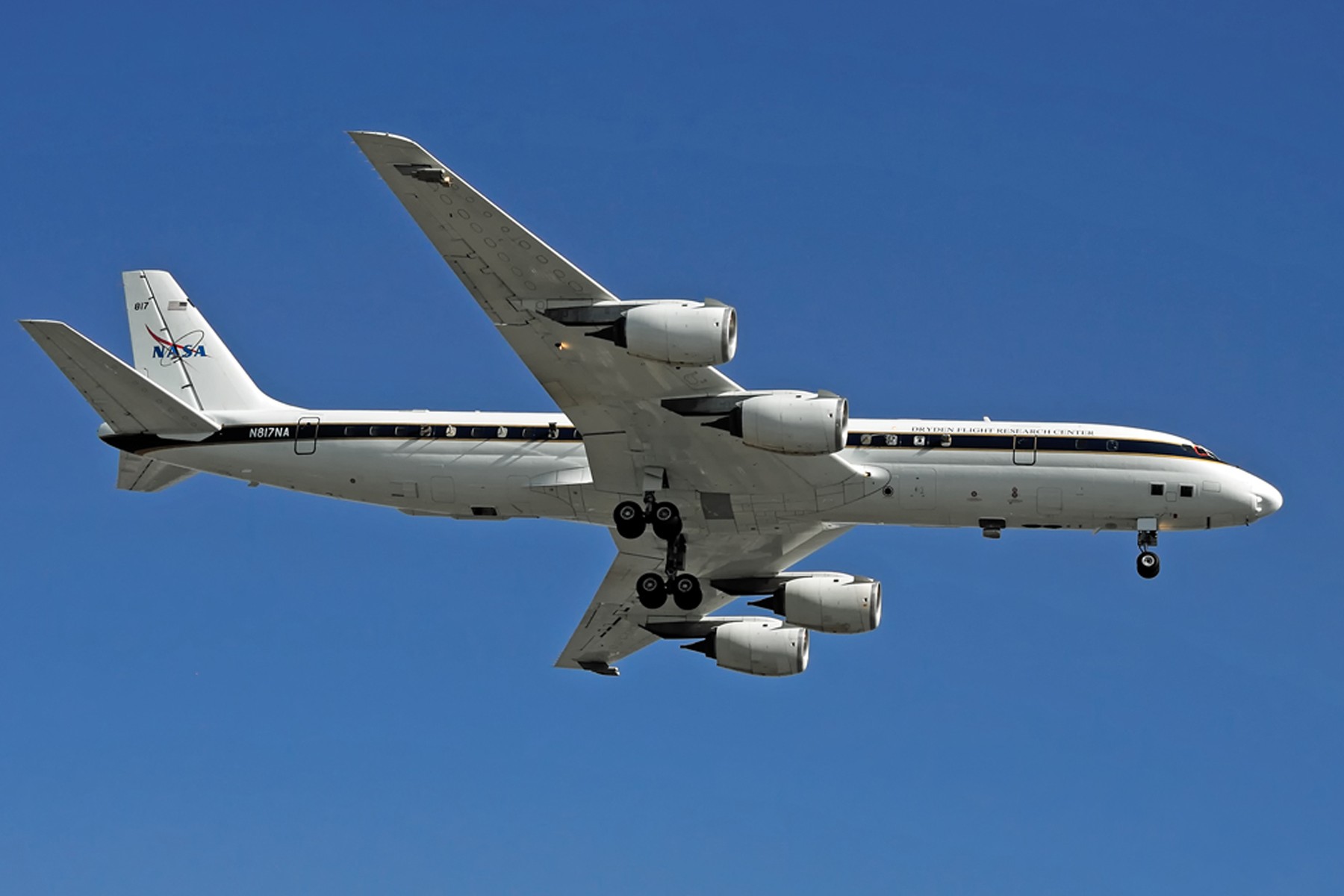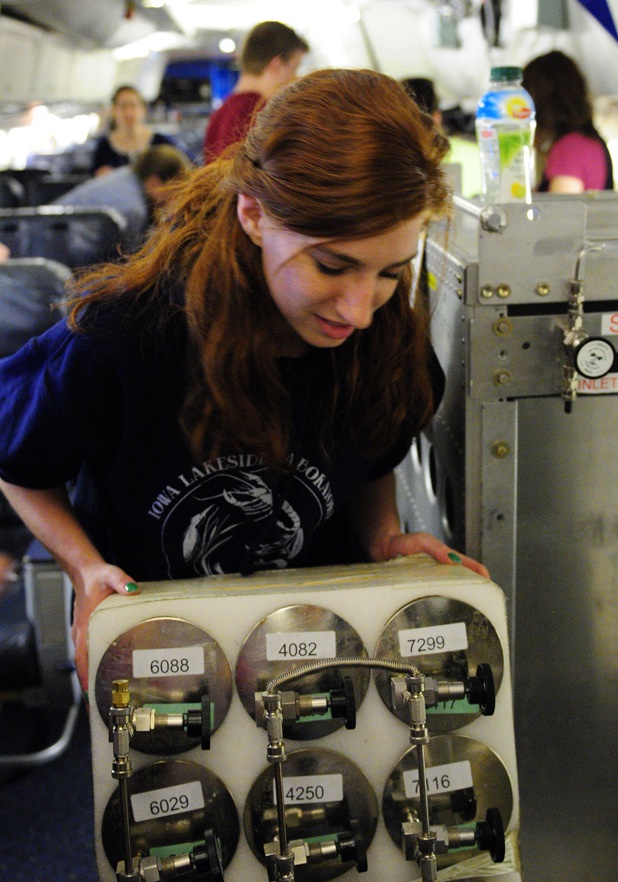
PALMDALE, Calif. – Thirty-two undergraduate students are participating in an eight-week NASA Airborne Science Program field experience designed to immerse them in the agency’s Earth Science research.

Now in its fifth year, NASA’s Student Airborne Research Program (SARP) provides a unique opportunity for undergraduate students majoring in the sciences, mathematics and engineering to participate in all aspects of a NASA Airborne Science research campaign. Flying aboard NASA’s DC-8 airborne laboratory, students will measure pollution and air quality in the Los Angeles basin and in California’s Central Valley and use remote sensing instruments to study forest ecology in the Sierra Nevada and ocean biology along the California coast.
In addition to airborne data collection, students will take validation or complementary measurements at field sites.
SARP participants are given a rare behind-the-scenes look at the instrument installation, flight planning and payload testing that is the basis of every successful Earth Science airborne campaign carried out by NASA. These campaigns play a pivotal role in the acquisition of process-oriented knowledge about the Earth system, as well as calibration and validation of NASA’s space-borne Earth observations, remote sensing measurements and high-resolution imagery for Earth system science.
SARP began June 10 at the Dryden Aircraft Operations Facility in Palmdale, Calif., with lectures by university faculty members, NASA scientists and NASA program managers. The students will fly onboard the DC-8 on during the week of June 17. They will acquire multi-spectral images of kelp beds in the Santa Barbara Channel and of forests in the Sierra Nevada Mountains. In addition, the students will overfly dairies and oil fields in the San Joaquin Valley and parts of the Los Angeles basin at altitudes as low as 1,000 feet in order to collect air samples and monitor air quality.
The final six weeks of the program will take place at the University of California, Irvine where students will analyze and interpret the data they collected onboard the aircraft. At the conclusion of the program, each student will deliver a final presentation on his/her results and conclusions.

Students participating in the 2013 SARP represent 32 different colleges and universities from across the United States. They were competitively selected based on outstanding academic performance, future career plans and interest in the Earth System Science.
The Student Airborne Research Program is one of NASA’s tools for exposing future scientists to the Earth Science missions that support environmental studies and the testing and development of new instruments and future satellite mission concepts. The program’s goal is to stimulate interest in NASA’s Earth Science research and aid in the recruitment and training of the next generation of scientists and engineers, many of whom will be getting their first hands-on research experience during this program.
SARP is managed by NASA’s Ames Research Center through the National Suborbital Education and Research Center at the University of North Dakota with funding and support from NASA’s Earth Science Division.
For additional information about SARP, visit:
View video about the 2012 SARP experience:
http://www.youtube.com/watch?v=m6J-wURapgs
For more information about NASA’s Airborne Science Program, visit:
http://airbornescience.nasa.gov
For additional information about NASA’s DC-8, visit:
http://airbornescience.nasa.gov/aircraft/DC-8
– end –
text-only version of this release
To receive status reports and news releases issued from the Dryden Newsroom electronically, send a blank e-mail message to dfrc-subscribe@newsletters.nasa.gov. To unsubscribe, send a blank e-mail message to dfrc-unsubscribe@newsletters.nasa.gov. The system will confirm your request via e-mail.
Alan Brown
NASA Dryden Flight Research Center
(661) 276-2665
alan.brown@nasa.gov
Emily Schaller
National Suborbital Education and Research Center
701-317-0789
emily.schaller@nasa.gov

























